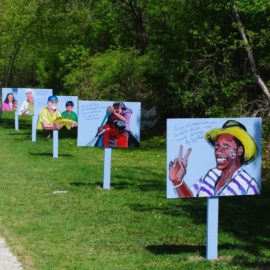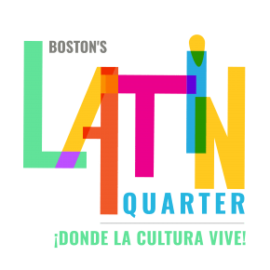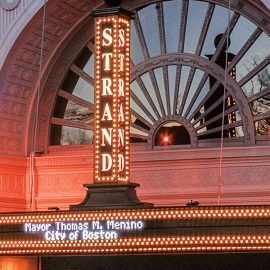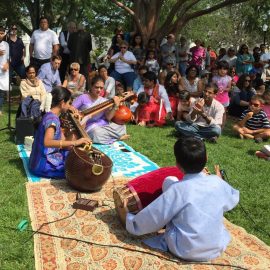Chinatown Cultural Plan 華埠文化規劃 點此看英語版 Click here for English version 簡介 《華埠文化規劃》是一項針對華埠未來發展的綜合性策略,旨在將其打造成一個歷史文化街區與文化藝術中心。本規劃概述了華埠目前的文化與藝術生態系統,並提出了一系列策略,以便支撐並培養在華埠創造文化與藝術的人員、場所、企業與組織。作為《華埠總體規劃》的附錄,《文化規劃》明確闡述了一系列共同願景、價值觀與行動,以維護華埠作為波士頓移民、工人階級以及亞裔僑居社區的繁榮文化空間的地位。 背景 華埠為何需要文化規劃? 儘管華埠的文化活動蓬勃發展,但對於創建該街區的獨特文化的工人階級與移民而言,他們面臨著空前嚴峻的流離失所威脅。居民與社區組織意識到,文化要蓬勃發展,人們必須齊心協力,在城市發展壓力下保護文化傳承者、場所、企業和機構的資源。「文化」的創造與保護不僅關乎美學或消費品,更與人們及其生活方式,以及作為力量、歸屬感以及福祉源泉的文化的保護相關。用規劃師Ananth Udupa的話來說,「就算你有房子,但是如果沒人和你一起生活,那你會很難生存下去。」文化規劃是一個至關重要的工具,它圍繞著保護華埠的藝術與文化生態系統,以及確保它們繼續在未來蓬勃發展來對策略和利益相關者進行協調。 「我們不希望華埠淪為迪士尼樂園式的華埠。我們需要確保華埠能夠繼續包容各種身份、僑民以及對話,繼續成為文化生活的一個充滿活力的部分,任何人都能在其中體驗並看到自己的影子。」 — Cynthia Woo 流程 《文化規劃》背後的流程始於不同組織之間的對話,包括ACDC、包氏藝術中心、華埠土地信託會(Chinatown Community Land Trust)和露絲·甘迺迪綠道保護會(Rose Kennedy Greenway),以組織並簡化社區的各種藝術文化戰略。此前,華埠總體規劃委員會(Chinatown Master Plan Committee)和大都會區域規劃委員會(Metropolitan Area Planning Commission,簡稱MAPC)於2018年展開了一項參與式社區規劃流程,最終制定了《華埠2020年總體規劃》。 藝術家在規劃流程中的參與構成了此專案的一個重要方面。組織方聘請了一個藝術家團隊來設計、執行並記錄創意社區參與活動。這些藝術家負責制定參與策略,以覆蓋社區的不同領域,並透過多種感官和認知方式來獲取意見。有關藝術家團隊的參與策略的更多資訊,請參閱社區參與。 「如果我們希望華埠發展成文化街區,那你就需要思考如何將文化、街道、住房以及不同政策關聯起來……另外,我們希望能在調查與焦點小組外有更多途徑,希望人們可以透過不同方式來與這個規劃產生聯繫,因此我們希望藝術家能參與到流程中來。」 — Lydia Lowe Jump To
Chinatown Cultural Plan – English
Chinatown Cultural Plan 華埠文化規劃 點此看中文版 Click here for Chinese version ABOUT The Chinatown Cultural Plan is a collective strategy for the future of Chinatown as a historic cultural district and hub of culture and art . This Plan captures a
Case Study
Case studies are based on projects by MAPC and other public, non-profit, and private organizations in Massachusetts, New England and throughout the US. They are divided into three themes for cultural planning, creative placemaking, and public arts & culture. Use
Arlington Arts and Culture Action Plan
Boston’s Latin Quarter Cultural Plan
Case Study: Upham’s Arts and Innovation District
Percent for Art Examples
Percent for Art Programs OVERVIEW What are the indicators of a successful percent-for-art program? How do you move from an ordinance or policy document to a robust program? And how do communities of different sizes design and implement percent-for-art policies
Creative Economy
Creative Economy OVERVIEW An important area of planning and policymaking is nurturing the economic development of the sector. This work includes ensuring the economic strength and sustainability of small, mid-sized, and large arts organizations and small individual artists/producers. It also
Case Study: Natick Center Cultural District
Percent for Art
What is Percent-for-Art? OVERVIEW Percent-for-art programs allocate a small portion of capital construction or renovation budgets (usually one percent) for the purchase, commissioning, and installation of artworks. Percent for art programs are one effective way for states and territories to



